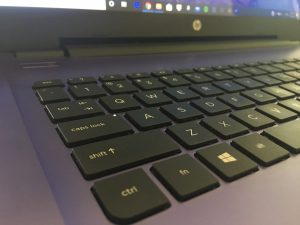
UHCL goes bimodal for fall
UHCL will reopen campus this fall by offering classes in various formats. Classes will be taught in different formats, either face to face, online-synchronous or asynchronous, online-synchronous/asynchronous or bimodal.
“In early July the registrar will upload to the class schedule which classes are bimodal, synchronously online, or asynchronously online.” Said Robert Bartsch, program director of the UHCL Center for Faculty Development. “Students will then be able to see the percentage of time classes will be in each mode as well as what days/times during the week they would need to be available. However, please keep in mind that faculty are still in the process of developing their classes and that they may need to make adjustments to how they are deciding to teach classes.”
Bimodal classes are face-to-face classes, following social distancing, that will have a way to deliver class instruction remotely to students who cannot attend class.
“There are many different ways a bimodal class could be taught, and faculty will be very creative in how they teach in the fall,” Bartsch said. “One way a bimodal class will be done is half the class will be asked to be face-to-face one week and the other half will be asked to be face-to-face the next week. Students who are face-to-face will be physically distanced in a classroom. In addition, the class will be broadcast to students who are not face-to-face for that week, and the class will be recorded for students who are not able to make it. Again, this is one example of how a class could go. There will be many different ways a class could look, and that look may change during the semester depending on community conditions.”

With classes taught partially or completely online, professors that rely on equipment to teach are exploring ways to safely get materials to their students, like having curbside pick-up for materials and equipment.
“In some ways, the lab is going to be large enough that they can have some physical distancing and they can have a full group of students in the lab,” said Bartsch. “In some labs, they may not be able to get all students all at once, so they may wind up with lower class sizes or they may say ‘one week this group of students come [to the lab] and the second week this group of students and the third week the first group of students’ and they may trade-off like that where people in the other weeks maybe writing up reports. In some cases, they may even be able to have kits that people can take home and work at a home environment after seeing some type of lab video or receive instructions. That will work for some labs, won’t necessarily work for all labs of course, but people are basically trying to get very creative on how to handle that.”
Finding solutions to bimodal classes is different for students looking for internships or cooperative education, where how they will interact with business looking for interns will largely depend on the business’s policy.
“Internships are going to be a little tricky – that’s going to depend a lot on the place they [the students] are trying to do the internships,” Bartsch said. “Lots of workplaces are having to do telecommuting, and sometime they can have their intern also do telecommuting at the same time, but a lot of people are waiting and seeing what the placements are going to be able to allow and what they would be able to accommodate.”
By holding bimodal classes, students, staff and faculty benefit from having limited face-to-face learning while remaining flexible should another spike in COVID-19 cases require the campus to resume fully online classes during the fall semester.
“In the spring, we actually surveyed the students, coming out of the spring semester we pivoted from face-to-face to online to all online – we actually asked students and we got an outstanding response: the upper 20% to 30% wanted only face-to-face and then there was a large group of around 65% that wanted some component face-to-face, so if you add it together more than 80% of the students were telling us ‘we’d like some face-to-face’ – so that’s one factor,” said Steven J. Berberich, senior vice president for academic affairs and provost. “The other factor is we recognize students learn in different ways. Some students may have chosen UHCL in an all-online program (we have some of those) but many of those students have chosen this institution because they wanted some face-to-face learning opportunity and that’s consistent with the survey. The key here is to make sure we have a safe environment for the fall and that’s not just for students coming back, but that’s for faculty and staff and everyone who is going to come back. Bimodal is our first path in bringing students back safely. ”
Changes to campus have been made to help students, staff and faculty keep themselves and each other safe while on campus, such as mandatory masks, cleaning stations and signs encouraging social distancing.
“The classroom itself will be occupied differently, where we look at how many students can actually be safely in that room meeting the social distance. In any space, we are trying to ensure that the people who occupy it are in it in a socially distant appropriate number and we are helping reinforce that kind of appropriate behavior through signs and information that we provide and in people really demonstrating. As your provost, I am going to try to be adamant about that first week – I’m going to get a mask and trying to get around, just demonstrating that sort of behavior we should all want to take to as we try to reduce the risk of passing the pandemic.”

Good article, but won’t the COVID numbers decide what is what?